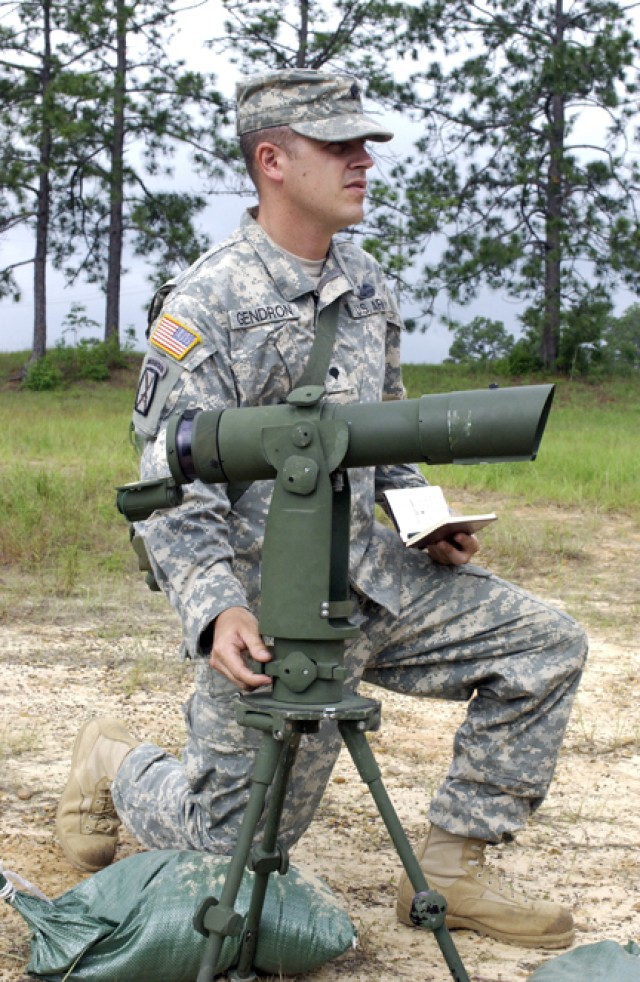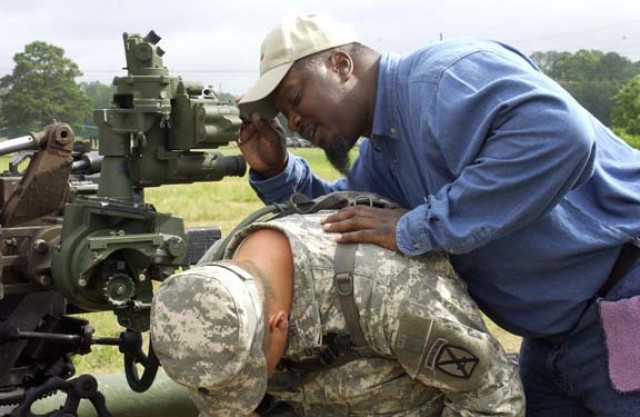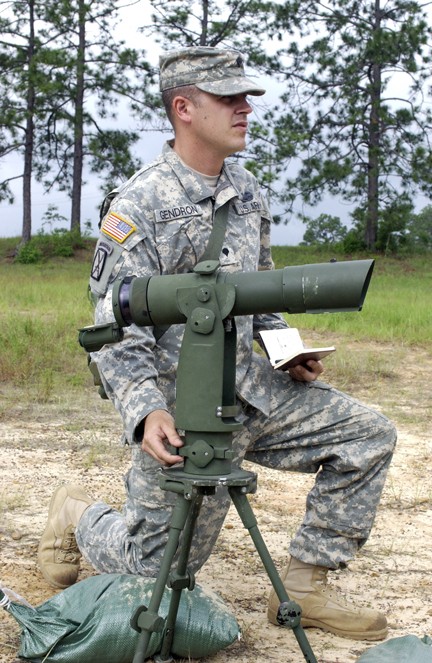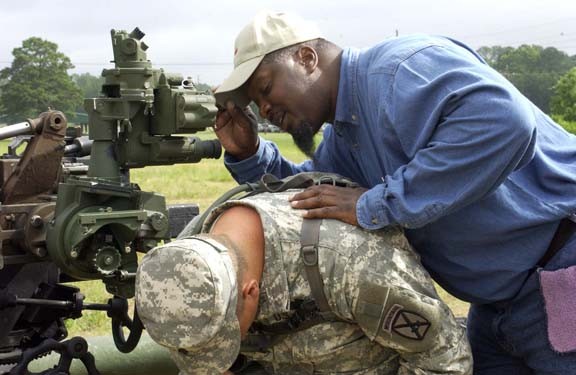FORT POLK, La. -- Field Artillery cannon crew members and their leaders from 4th Infantry Brigade Combat Team, 10th Mountain Division, conducted refresher training on Red Leg Field here, the first week of June.
Soldiers and leaders assigned to Batteries A and B, 5th Battalion, 25th Field Artillery Regiment honed their skills as advance party members, gunners, other cannon crewmember positions and section chiefs using 105mm M119A2 towed howitzers. A team of subject matter experts, known as a Collective Training and Evaluation Team from the "Home of the Field Artillery," Fort Sill, Okla., led the training.
"We bring back the artillery skills that these guys are lacking ... for various reasons, whether they have been (at) war or whether a lot of the leadership (has left)," said Howard Kirkman, Field Artillery CTET expert. "And so there is a gap there, and we come in and fill the gap. We do what we call 'regreen' these guys; we bring them back up to speed."
Sgt. 1st Class Anthony Gamble is the master gunner for 5th Bn, 25th FA. He said the training was divided into three skill sets. The advance party arrives in an area before cannon crew members occupy the space to set up a howitzer and, from that point, platoon sergeants lay on howitzers using aiming circles.
An advance party secures a sight for a howitzer emplacement, making sure it is properly prepped, then establishes an azimuth of fire and initial deflection, explained Sgt. Thomas Bouvia, a battery gunner who helped train advance party Soldiers. Then, section chiefs and crew members arrive with a howitzer to occupy the space and calculate all the preliminary numbers.
"All they (cannon crewmembers) have to do is occupy the howitzer, lay it and then they can commence fire missions," commented Bouvia. "The platoon sergeants and platoon leaders are the guys who will man the aiming circle and the safety circle (a secondary aiming reference); so that when the section occupies the howitzer ... they are shooting accurate fires."
Spc. Keith Gendron, assigned to Btry A, said he has never been a gunner on the M119A2 howitzer. During his last deployment, he was a team leader responsible for performing infantry tasks and maneuvers, so he felt the training was beneficial.
"We were training how to lay the howitzer with the M2 compass and verify bore sight, which is the M140 alignment device, collimator," explained Gendron.
"I know roughly how to do it, but this is definitely a big help, especially for the guys who have never done it before.
"They are actually getting to go through and learn it (as) other guys are leaving (the unit). They will be able to step up and take their places."
Unlike Gendron, Sgt. Fitzgerald Octave, Btry B, has been a13B gunner for seven years. He has deployed twice to Iraq and once to Afghanistan. Even with all of his gunner experience, Octave found the training valuable.
"It's been so long since I have been on a sight as a gunner, since 2006, so a lot of stuff is coming back to me," commented Octave. "It's (becoming) second nature."
Having the CTET coming from Fort Sill to conduct the training let's new Soldiers know "what right looks like," said Octave.
After being deployed for a year performing infantry maneuvers and tactics, it is good to get back to current military occupational specialty training, he emphasized.
Octave offers his seven years of gunner experience to the new Soldiers, saying he is able to "teach, mentor, and coach them at the same time."
Bouvia thinks the training went well. Soldiers learned the information they need to perform their jobs successfully, but it is going to take time when there are so many new personnel.
"This training is what is going to make or break these sections when it comes to section certifications, live-fire shoots, and deployments to Afghanistan," he said.




Social Sharing